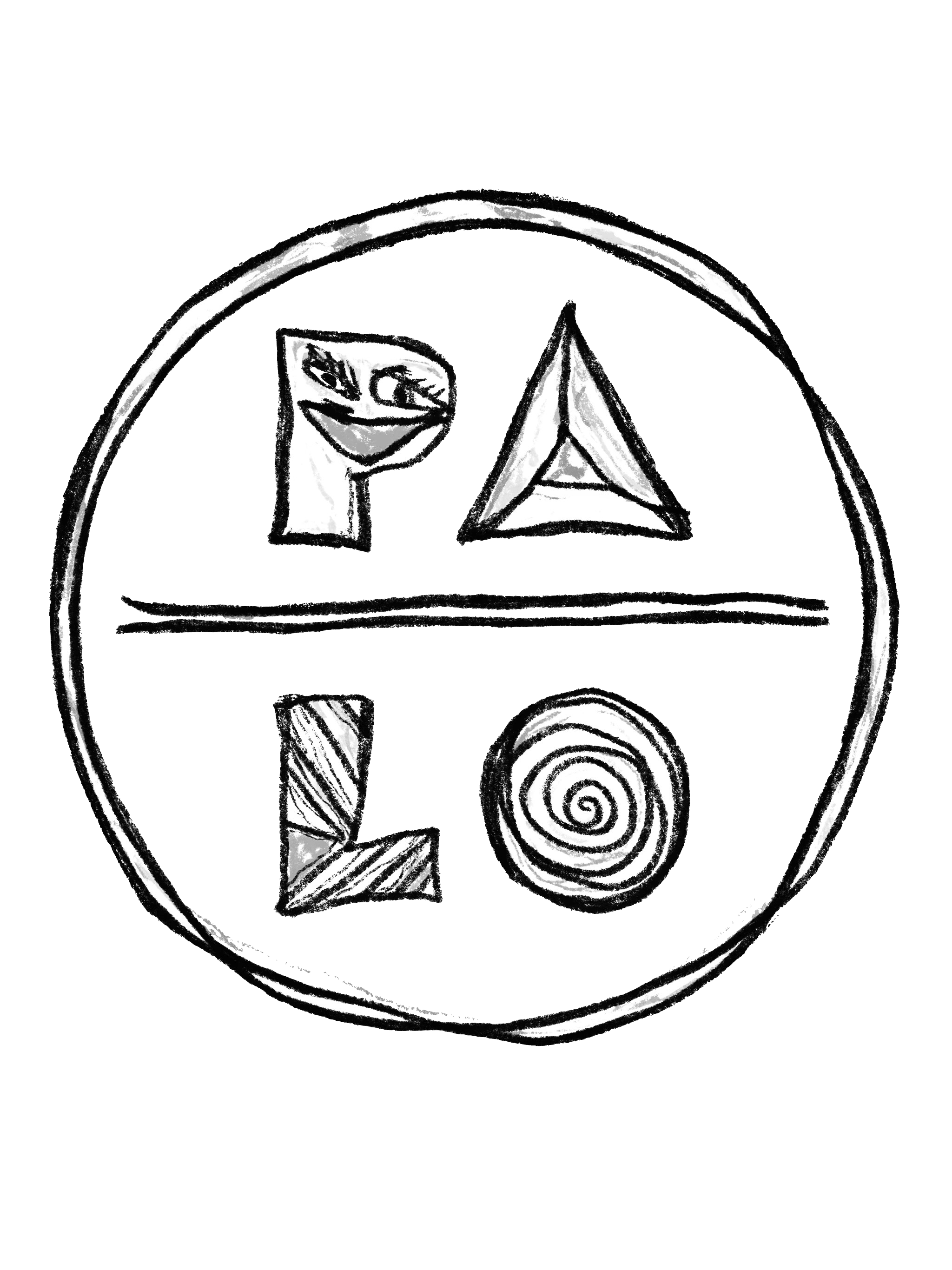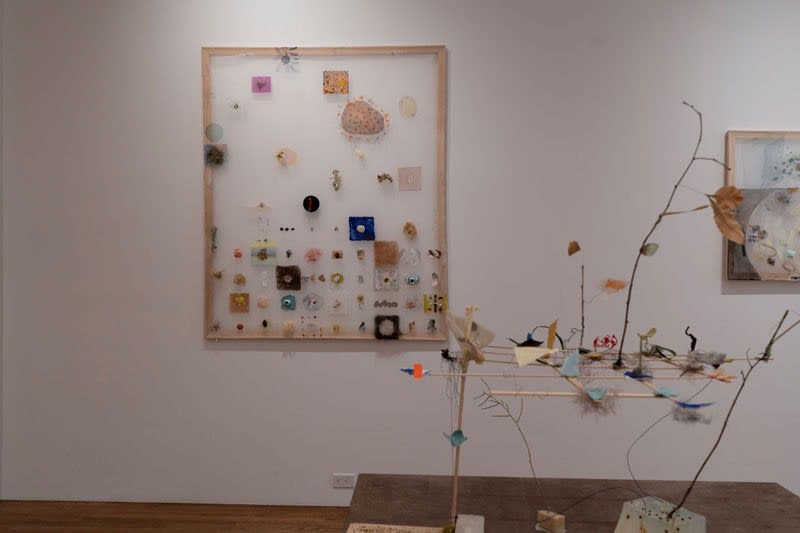While the archival impulse deals with the canon of majoritarian culture on its own terms and with its own language, provisional sculpture provides a visual alterity of the marginal that has always run parallel to it—a vibrant language of ordering and piecing together what has been broken. In the film The Gleaners and I (2000), Agnès Varda traces the history of gleaning for its utopic potential. Remarking early in her documentary that it is a practice that was historically done by women, Varda unearths a powerful countermodernism, an anti-capitalist way of seeing and foraging, that when applied to art provides necessary parallax to the monument and to history painting. Rachel Wolf is a gleaner, performing sculpture through the figuration of the glaneuse that was depicted in Jean-François Millet’s painting, in order to build ecology through what is discarded and cast off. The artist’s sculptural language of gathering weaves rich, material connectedness through frailty and leanness, reflecting the natural world through its fragments and charging each of their discreet moments with poetic difference. Wolf exhibits a rare ability to communicate the experience of growth and decay within her work without reifying it or making it theatrical, by combining materials that have different historical and material speeds into rhizomatic webs of association. The artist intersperses materials that feel dynamic and natural with polycarbonate and silicates, forming softly whispering dialectics between them that foreshadow environmental collapse or our shifting futures. Pills find their way into stacks of nested hair and broken eggs, string and spore are mixed with cut-out images and arranged at times in shelves like Yuji Agematsu. There are underlying sensibilities of birth and pharmacology through the recurring iconography of pills and eggs, mixed in with little abjections of hair and scraps to suggest constellated life cycles gridded out together.
Wolf’s best works are those that allow for multiple slippages of time, where active objects and open systems are positioned against the static and sealed. In her untitled wall works, the flatness of silkscreen creates the feel of a scanner bed of morsels and debris; an ecosystem of pocket linings and tree hollows laid out to be autopsied or archived. Her freestanding works straddle multiple associations, occupying the spaces between weathervanes, flea circuses, mobiles, or brambles. If the bramble is the visual armature, then each sprig and offshoot grow simple and playful gestures like berries on the vine. Nothing accrues to the point of being a heap; instead, it is a delicate system of spindly architectures and entanglements, soft conglomerate, the Wunderkammers of bowerbirds. Nets and filaments are a recurring motif, used to complicate the negative spaces of the structures. Like Sarah Sze, Wolf sees how much she can get away with without glue, preferring instead the tactic of stacking, leaning, and spiking. Each of the artist’s magnetized affects are carefully balanced or stood together out of bits and crumbs, forming archways of studio thistles or plastic dust bunnies, and grottoes of accumulations that conflate natural things with synthetic shed.
Significantly, there is a grammar happening within the materials. Wolf’s systems sort clouds of material into poetic linkages that charge fragments with embodied and sensorial experience, both true and imagined. In one of her untitled drawings, Wolf adds captions to drawings of her individual pieces rendered as abstract gestures, such as “tickle in the throat” or “shadow extract.” It is within this surrealist defining of materials that Wolf is able to engage in her most exciting non-hierarchy. While the resin casts in the front room feel like early experiments, the architectures, drawings, and wall works in the back two rooms communicate their own subjectivity and certainty.
But Wolf’s gleaning may also reference ceremony, as it at times vibrates with the tones of devil’s nests and daisy chains, the forms of seer objects or markers of ritual, congregations that watch over or look out for things—remembering them. Just as easily, it could be recursive to art language itself, autotelic and referencing provisional languages of sculpture. It has the thinness and careful architectures of B. Wurtz, rough stuff and cast off made elegant and poetically unsure, and some of the same early ecological interests of Anicka Yi. However, in the backroom, Wolf’s most ambitious piece is The Hut, which offers inside a kind of makeup counter of collections and fragments, sold by the pound, which also feels like an interest in the unnatural unique shop of Claes Oldenburg. Arranging objects like stanzas or concrete poetry, recipes of memory traces, clusters and accumulation. Importantly, the artist stops short of inventing twee and remains at embodied textures and abject evidence through the paleness of her color palette and the undisclosed specificity of her materials. Wolf arranges a natural and scavenged palette–dancing with the hues and spectrums of robin’s eggs, pearl, spore, and coral to make harmonies of active and inert material.
More recently, Wolf joins artists like Mimi Park who have been more inclined to re-represent ecology through aesthetic world building. However, Wolf’s aesthetic steps back from full ecology and might be closer to miniscule table-top Jessica Stockholder sculptures or Richard Tuttle just as easily. The artist’s tools of rummage and foraging are often rangy and spindly but sometimes are laid out in the form of affective clouds or taxonomic grids. If there is an extension to Lucy Lippard’s important essay “Eccentric Abstraction” (1966), provisional gleaning might be its exciting extension, sensing the time and moving away from the body and into the ecosphere. If so, Wolf’s practice has the makings of being one of its flagbearers.
In her film, Varda remarks how pleased gleaners are when the harvesting machines malfunction. Gleaning is anti-machine. It requires wandering without knowing, seeing from curious looking. Therein lies the power of Wolf’s practice. One of Western philosophy’s earliest questions was a meditation on order–do we live in chaos or cosmos? Wolf finds harmony within driftwood, ransacking the debris of the city to reassemble it into tumbleweeds and nature machines. Rather than romancing the algorithm or the screen, Wolf invents pataphysical machines that you might stumble upon at the entrance to a cave or the forking of a river, that mimic bio-materials and oftentimes are. It isn’t dada. It finds cosmos there. It is a yearning for a world that takes materials and their histories more seriously, prioritizing that history over the history of the art historical cannon, to assemble what was left behind from the harvest, and remind us that the gifts we give each other are the currency of meaning. Within Wolf’s range of blooming subtleties, trapped within her tumbleweeds of curiosities, is a language of keeping.


